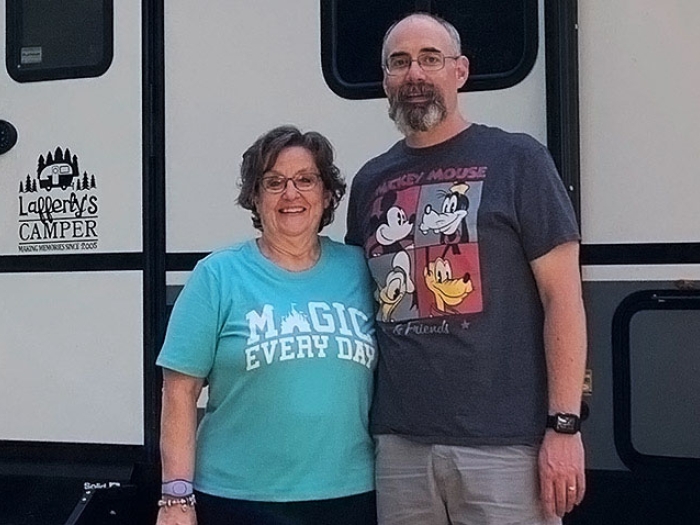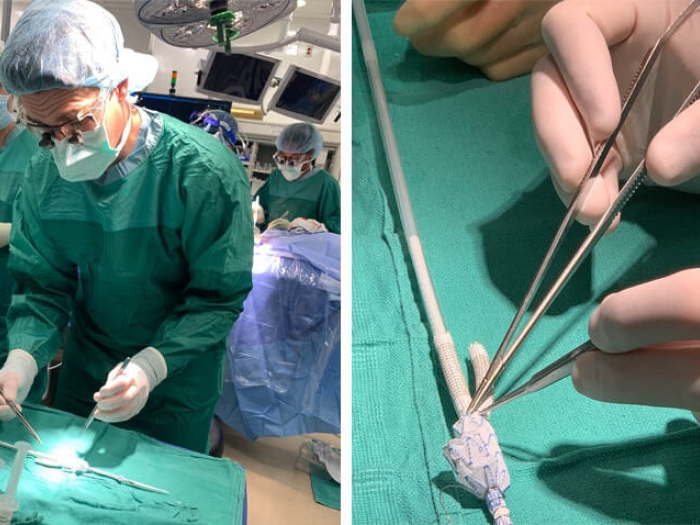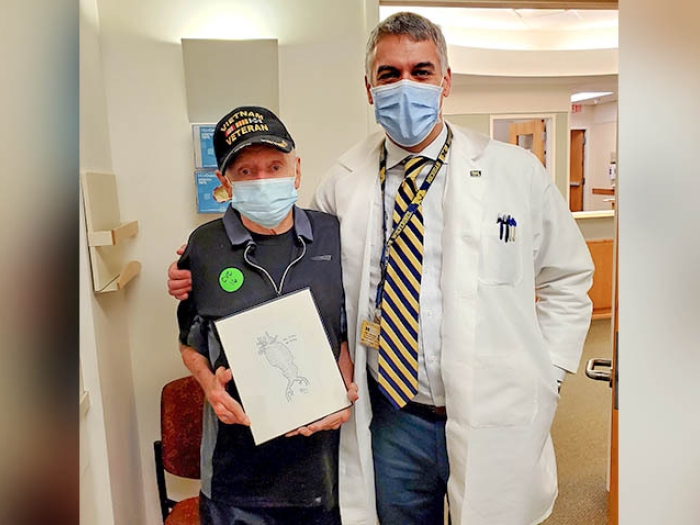A Michigan Medicine vascular surgeon shares vital information about monitoring and treating aortic aneurysm.
7:00 AM
Author |

If you or a loved one has been diagnosed with an aortic aneurysm — a condition that affects the main artery carrying blood from the heart to the rest of the body — chances are you have a lot of questions.
MORE FROM MICHIGAN: Sign up for our weekly newsletter
Michigan Medicine vascular surgeon Jonathan Eliason, M.D., shares answers to the questions that patients and their families often ask.
What is an aortic aneurysm? Is it the same as an enlarged aorta?
Eliason: An aortic aneurysm, also referred to as an enlarged aorta, is an abnormal enlargement of the aorta, which can occur in the chest (thoracic aortic aneurysm), abdomen (abdominal aortic aneurysm, or AAA) or both (thoracoabdominal aortic aneurysm). Approximately 80 percent of aortic aneurysms are in the abdomen.
The average aorta is approximately 2 cm, or slightly smaller than 1 inch. An aneurysm means that the diameter is 1.5 times larger than normal, or 3 cm, in the abdominal aorta. When an aneurysm grows to 5.5 cm in men and 5 cm in women, these tend to be the sizes where surgery is actively considered.
When does a surgeon first see a patient with an enlarged aorta?
Eliason: Once an aneurysm is discovered, whether through an incidental finding or an intentional screening, it is appropriate to begin talking with a surgeon to determine the frequency of follow-up and to plot growth rates and overall size.
Many patients with a slow-growing aortic aneurysm never undergo surgery but are monitored on a regular basis as a precaution to measure any growth.
Who is a good candidate for surgery?
Eliason: Patients considered good surgical candidates are those who are able to perform normal daily activities independently and are either never smokers or quit cigarettes a long time ago. Kidney dysfunction is very concerning when considering repair of an AAA. The anatomic characteristics are also important. For example, if the aneurysm extent is high enough to encroach on the kidney arteries or the arteries that feed the intestines, the patient might have a higher risk for surgery.
Is age a factor in deciding to operate?
Eliason: Age does not appear to be a factor in a patient's response to a minimally invasive procedure. In fact, a Stanford study of patients age 90-plus who are ultra-fit reveals recovery consistent with that of younger patients. It's more important for the patient to be physiologically young than chronologically young.
What does surgery entail?
Eliason: A minimally invasive procedure known as endovascular aneurysm repair (EVAR) offers a quick recovery if there are no complications. The EVAR procedure requires a small incision in the groin (to insert a catheter), followed by the placement of a stent graft inside the aneurysm to reinforce weak spots in the artery. This procedure is very effective in preventing aneurysm rupture, shortens the length of hospital stay and greatly reduces major complications. It takes anywhere from two to three hours to complete.
SEE ALSO: Enlarged Aorta Risks and Symptoms: What to Know
If the AAA involves the kidney arteries, the minimally invasive repair might be a fenestrated endovascular aneurysm repair. This can take longer than an EVAR surgery. If the aneurysm is in the chest, the minimally invasive approach would be called thoracic endovascular aortic repair.
Recovery from open surgery takes much longer. By three months, these patients are feeling pretty well, but full recovery can take up to a year.
What other treatment options do patients have?
Eliason: Right now, there is no proven nonsurgical therapy. Minimally invasive surgery is the least-stressful option we can offer certain patients.
An enlarged aorta will typically continue to get larger regardless of risk factor modification. But the growth rate may be slower if the patient quits smoking. Lower blood pressures are not clearly associated with slower growth in most studies, but keeping blood pressure and cholesterol levels under control will help with overall vascular health and may improve outcomes if surgery becomes necessary.
Is there anything else patients should know about surgery?
Eliason: Diagnosis of an aortic aneurysm and the watchful waiting period is frightening to many patients. But monitoring a patient's aortic aneurysm enables the surgeon to recommend operating at the right time, if surgery is warranted.

Explore a variety of health care news & stories by visiting the Health Lab home page for more articles.

Department of Communication at Michigan Medicine
Want top health & research news weekly? Sign up for Health Lab’s newsletters today!





